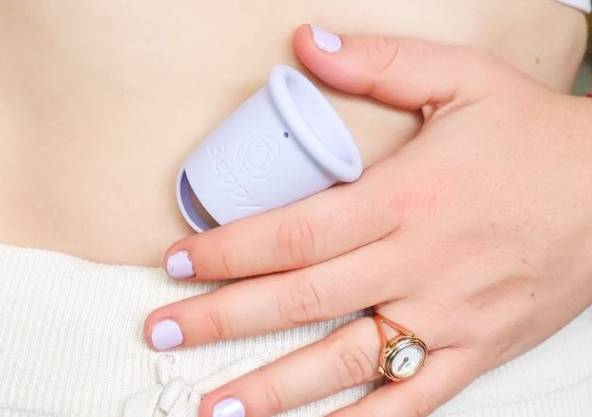Switch from disposable tampons and pads to Beppy! Experience ultimate comfort, hygiene, convenience, and sustainability.

The bladder is an important organ in the urinary system. It is located in the pelvis, above and behind the pubic bone. Urine is made in the kidneys and goes to the bladder through the ureters, which connect these organs. The bladder stores urine until it receives signals from the body to empty it. Urine then leaves the bladder through the urethra or urethra. Various conditions involving the bladder and urethra can cause a feeling of fullness or pressure on the bladder.
The bladder and bowel react, among other things, to cramps from the uterus during menstruation. All of this means that you may feel frequent urges and that urination and defecation can sometimes be painful.
Other factors also play a role. Around your period, your belly is a bit thicker. In the premenstrual phase, you usually retain fluid. Because of the thicker layer of uterine mucus, the uterus is slightly enlarged.
Myomas (fibroids) and, for example, a menstrual cup or tampon also take up some space. All this puts extra pressure on the bladder and/or urethra. This immediately explains why you usually have to urinate more often at the beginning of your period.
But usually, when using a menstrual cup, there is a direct pressure on the bladder, but pressure on the ureter. If the menstrual cup is placed halfway up the vagina, a menstrual cup might compress the ureter a little. Because the urine then cannot leave the bladder easily or at all, pressure on the bladder is created. Usually this problem is immediately resolved shortly after removing the menstrual cup and urinating afterwards. Advice is to place the menstrual cup deeper in cases where this occurs.
Would you like to know more about the cup? Please contact us at: [email protected]
€36,95
* Prices incl. VAT, Shipping costs€39,99
* Prices incl. VAT, Shipping costs€34,95
* Prices incl. VAT, Shipping costsNL: +3110 467 65 73 (9.00 – 17.00)
HQ Beppy, Nederland
Seinhuiswachter 1-3
3034 KH Rotterdam
BE: +32 (0)78 158 349 (9.00 – 17.00)
Beppy, België
9A Gravin Elisabethlaan, postbus 77
2320 Hoogstraten
Kvk: 24123466
© 2025 – Made with ❤️ by Beppy
Looks like you haven't made a choice yet.